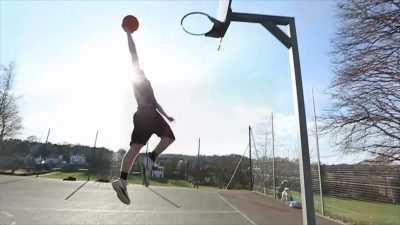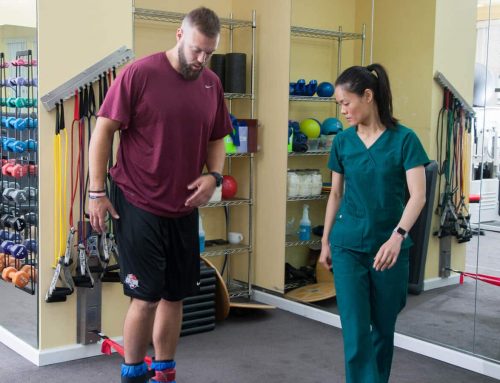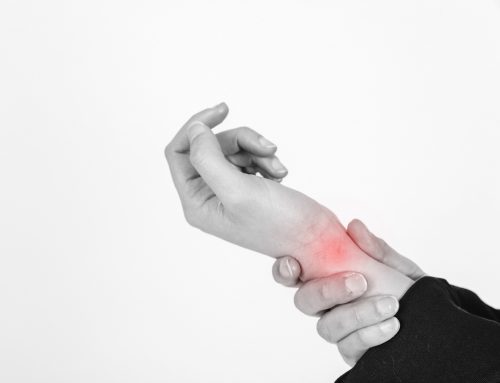
Your spine supports your body and allows you to stand, sit, bend and twist. If you start having issues with your spine and back, it can negatively impact your day-to-day life. Lower back pain can affect anyone, and it can hit you when you least expect it. It could occur after picking up a load of laundry or after a leisurely game of sports. It may even pop up weeks, months or even years after the triggering activity.
Back issues can also develop in those who remain inactive and stationary for too long and can be revalent in those who sit at a desk all day. In New York City, this is true for many of us.
Being diagnosed with a herniated disc may sound scary but it is quite common and treatable – in fact, more than three million cases are reported every year in the US. Typically, the pain will go away on its own and only a small majority of people will have chronic pain resulting from it.
What is a Herniated Disc?
Your spine is made up of 33 bones which are classified into five different sections– 7 vertebrae in the cervical region, 12 in the thoracic region, 5 in the lumbar, 5 in the sacral region and 4 in the coccygeal region. In between each vertebra are tissues called discs – these discs are jelly- like inside and their function is to cushion these bones and minimize the force and impact placed on your spine when you move. When the inside of these discs break through its structure, or annulus, it can affect or irritate a nearby nerve. When this occurs, it is called a herniated disc.
While they are much more common in the lower back, they can also occur in the neck. The most common location for herniated discs is between the L4 and L5 due to their location and the fact that they absorb and bear the most weight from your body, especially as you sit or stand.
What Causes a Herniated Disc?
Herniated discs can occur quickly as a result of sudden trauma or injury, such as a car accident or sports injury, or they can occur slowly as a result of years of poor posture. They can also arise as you get older from normal wear-and-tear. As you age, your discs naturally lose their water content, flexibility and elasticity which leaves you more susceptible to back issues as well.
What are the Symptoms?
You may have little to no symptoms depending on where the herniation is and whether any of the surrounding nerve tissue is being irritated or not. On the other end of the spectrum, you may also suffer severe pain. It can be localized to the specific area of the herniation and can range anywhere from a dull pain to a sharp, radiating pain.
If you have pain radiating down your arm, your herniation is in your neck. If your pain runs down your buttocks and legs, it typically means you have a disc herniation in your lower back. You may also experience numbness or muscle weakness which can impact your ability to lift or
hold things.
Who Is at Risk?
Herniated discs can happen to anyone but if any of the following factors apply to you, you could be at greater risk:
Your occupation: if you have a physically demanding job which requires a lot of lifting and bending, such as construction work or working in fulfillment warehouse, you could be at greater risk. Additionally, if you work an office job and sit behind a desk for long hours without any breaks, you could also be at risk. Your body isn’t meant to be sedentary for hours on end and poor posture can really wreak havoc on your body’s structure.
Weight: the more weight your body has to support, the greater your risk of developing back issues. Extra pounds places more stress on your frame.
Genetics: if there is a history of back problems in your family, you could be predisposed to developing a herniated disc.
What are your treatment options?
Physical Therapy – stretching and strengthening exercises can resolve the aches and pains associated with a herniated disc. Depending on where the herniation is, physical therapists will work with you on a customized set of exercises to effectively treat your specific condition.
Heat/Cold Therapy – At the initial onset of symptoms, cold therapy should be applied to ease inflammation during the first 48 hours. After a few days, you may alternate to heat therapy to alleviate the aches and pains and relieve muscle spasms.
Cortisone Injections – If you’re still experiencing pain after physical therapy, cortisone injections will provide temporary relief. Your doctor will inject a steroid to help with the inflammation and provide pain relief. Cortistone shots can provide relief for several weeks to several months but are not a permanent solution.
Spinal Decompression Therapy
If you have tried physical therapy and other modalities to no avail and your back pain still persists, your doctor may suggest spinal decompression therapy. Spinal decompression therapy is a type of motorized traction and it is very effective in treating herniated, bulging and slipped discs. To start, you lay on the spinal decompression table and are strapped in through a pelvic harness. For approximately 30 minutes, the machine will apply gentle traction forces to alleviate the pressures off the spine, allowing nutrients and water to flow in between the discs to accelerate the healing process. The traction therapy also creates a negative pressure within the disc to pull the bulging material back into the disc, allowing it to retract.
Spinal decompression therapy is a low-risk treatment with virtually no side effects, although some may experience muscle spasms for a short period of time. There is virtually no downtime, so you can book a session at your convenience without having to alter your day or plans.
In our office, we use the DRX9000 and DRX9000C spinal decompression systems and we are one of only a few practices in the city with this state-of-the-art equipment. According to clinical testing, the DRX9000 has an 86% success rate. if you’re a good candidate, spinal decompression therapy can certainly help you, especially if you haven’t seen results with conservative measures. Generally, most patients will see results after just a few sessions, however results are best seen after six weeks.
How Can We Help?
We are leading specialists with conditions affecting the musculoskeletal system. Our office specializes in physical medicine and rehabilitation and is overseen by our medical director, Dr. Steven Moalemi. After an initial consultation with our medical doctor, we can diagnose and treat your neck and back pain through non-surgical modalities.
We will provide you with a comprehensive treatment plan and our team of specialists will work together and guide you every step of the way to help you increase your mobility and live and maintain a pain-free life.
Whether you work in the office and sit at a desk all day or are transporting New Yorkers as a cab driver or MTA employee, we all share the same aches and pains from being stationary for too long. If you have been suffering from herniated discs and are seeking relief, reach out to us at (646) 665-7109.
Published By:
Empire Physical Medicine & Pain Management
7 W 45th St floor 9,
New York, NY 10036
Phone: (646) 665-7109
Website: https://manhattanpainrelief.com





